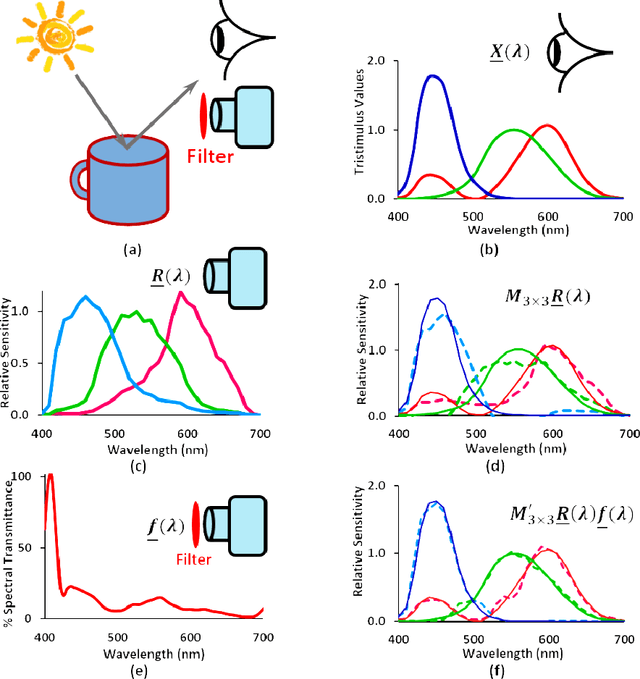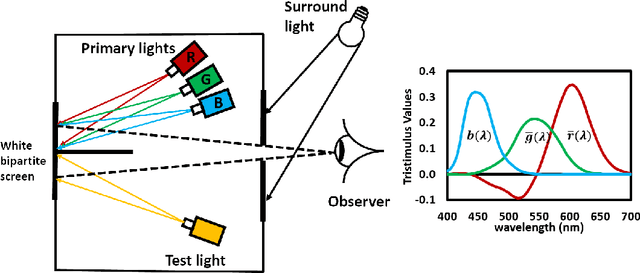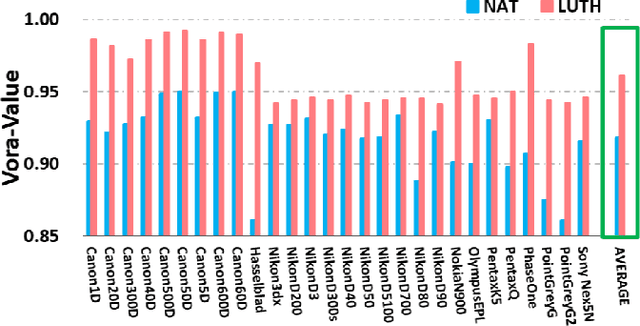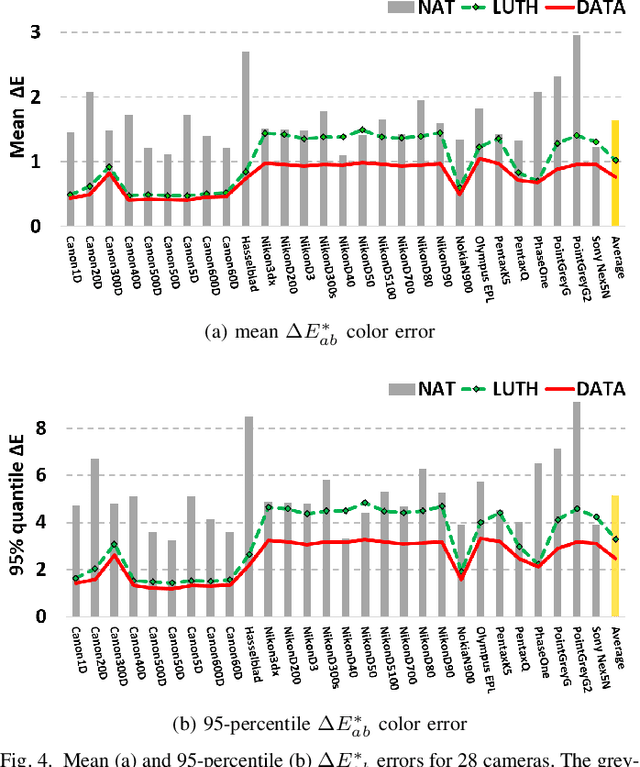Designing Color Filters that Make Cameras MoreColorimetric
Paper and Code
Mar 27, 2020



When we place a colored filter in front of a camera the effective camera response functions are equal to the given camera spectral sensitivities multiplied by the filter spectral transmittance. In this paper, we solve for the filter which returns the modified sensitivities as close to being a linear transformation from the color matching functions of human visual system as possible. When this linearity condition - sometimes called the Luther condition - is approximately met, the `camera+filter' system can be used for accurate color measurement. Then, we reformulate our filter design optimisation for making the sensor responses as close to the CIEXYZ tristimulus values as possible given the knowledge of real measured surfaces and illuminants spectra data. This data-driven method in turn is extended to incorporate constraints on the filter (smoothness and bounded transmission). Also, because how the optimisation is initialised is shown to impact on the performance of the solved-for filters, a multi-initialisation optimisation is developed. Experiments demonstrate that, by taking pictures through our optimised color filters we can make cameras significantly more colorimetric.
 Add to Chrome
Add to Chrome Add to Firefox
Add to Firefox Add to Edge
Add to Edge